Astrophysics
The aim of the work is getting reference data on thermophoretic motion eliminating gravity-induced perturbation, developing new instrumentation and procedures. A series of experiments on measuring phoretic velocities was performed in the Bremen drop tower providing 4.7 s of high quality microgravity conditions, which allowed making negligible particle sedimentation and buoyancy driven convection.mehr...
Die internationale ICAPS-Kollaboration (Interactions in Cosmic and Atmospheric Particle Systems) hat sich vor rund zehn Jahren zusammengefunden, um unter den Bedingungen der Schwerelosigkeit Experimente mit Aerosol- und Staubpartikeln durchzuführen und damit zu einem tieferen Verständnis der Vorgänge in planetaren Atmosphären, auf planetaren Oberflächen und bei der Bildung der Planeten zu gelangen.mehr...
Asteriods, comets and terrestrial planets form from small particles in protoplanetary disks. These particles are embedded in gaseous environment and exposed to stellar light and infrared radiation from the disk during the different stages of planet formation. Due to interaction with gas and radiation particles are subject to photophoretic forces which leads to particle transport.mehr...
In diesen Experimenten soll das Schüttverhalten granularer, eisiger Materie und auch und insbesondere von Eis selbst als granularem Medium untersucht werden, wie sie beispielsweise auf Kometen, Asteroiden oder anderen Kleinkörpern im äußeren Sonnensystem zu finden sind.mehr...
Die Cassini-Sonde hat eine Vielzahl von zuvor unentdeckten Strukturen in den Ringen des Saturns enthüllt. Wie viele andere Beobachtungen, werfen auch jene im F-Ring die Fragen nach ihrer Entstehung auf. Es wird vermutet, dass Stöße bei hohen Geschwindigkeiten die Ursache für die Jets, Wakes und Spiralstrukturen sind.mehr...
Die Bildung von Strukturen in den Ringen des Saturns ist maßgeblich durch Kollisionen zwischen den Ringteilchen bestimmt. Zur Untersuchung des Stoßverhaltens dieser Teilchen wird im EisViel-Experiment ein Ensemble aus Eiskugeln bei niedrigen Geschwindigkeiten zum Zusammenstoß gebracht.mehr...
Scope of the Drop Tower campaign was the examination of the heat pipe functionality under zero gravity for the eROSITA - mission. The eROSITA cameras operate at -95°C. The cooling system is completely passive with several heat pipes and two radiators. The heat pipes need to be filled with a suitable working fluid at those low temperatures.mehr...
Das Fließverhalten granularer Medien im Milli-g-Bereich (GRAN-MED) ist ein Projekt im Rahmen der astrophysikalischen Fragestellungen des internationalen Mikrogravitationsforschungsprogramms ICAPS.mehr...
Die Mikro-G-Testkampagnen am Fallturm Bremen zielen im Wesentlichen auf die Verifizierung der Funktion des „Surface Impact Sampling Device” der Hayabusa-2 Mission ab. Dieses Subsystem ermöglicht die Probenentnahme auf der Oberfläche des Zielobjekts 1999JU3, ein Erdnaher Asteroid der C-Klasse, welche dann 2020 auf die Erde zurückgebracht wird.mehr...
In order to understand the first stages of planetary formation it is necessary to better understand the physics of dust. Experimentally the conditions of a protoplanetary dust disk can be described by a dust cloud embedded in a thin gas.mehr...
Das Verhalten von geladenen Staubteilchen in einer Paul-Falle (ICAPS-Paul-Falle) ist ein Projekt im Rahmen der astrophysikalischen Fragestellungen des internationalen Mikrogravitationsforschungsprogramms ICAPS.mehr...
Das Experiment "Stöße zwischen Staubagglomeraten und Staubschichten im Vakuum" gehört zu den Labor- und Entwicklungsarbeiten im Rahmen der astrophysikalischen Fragestellungen des internationalen Mikrogravitationsforschungsprogramms ICAPS.mehr...
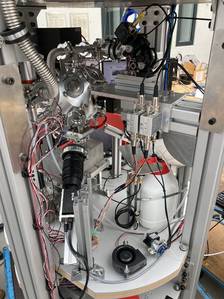
We plan to study the growth of dust agglomerates in nascent solar systems from micrometer-sized solid grains to millimeter-sized fractal clusters. In a first step and after creating a homogeneous cloud of single monomer grains dispersed in N2 gas of about 1 mbar pressure, the particles will be subjected to Brownian motion only. Hence, they will collide at extremely low velocities and form large fractal agglomerates.mehr...
The evolutionary tracks of protoplanetary dust aggregates from μm-sized dust to cm-sized pebbles lead through a parameter space that has not yet been covered by experiments (Güttler et al. 2010, Zsom et al. 2010). Drop tower experiments can provide a reasonable part of the parameter space forseen for a suborbital flight.mehr...
To understand the formation of planets in the early solar system long-duration experiments with clouds of micrometer-sized particles are planned for the ICAPS facility on board the International Space Station ISS, for example light-scattering and agglomeration experiments.mehr...
During the last century, the presence of icy particles throughout the universe has been confirmed by numerous ground and space based observations. Ultrathin icy layers are known to cover dust particles within the cold regions of the interstellar medium, and drive a rich chemistry in energetic star-forming regions.mehr...
Das Experiment dient zur Untersuchung des dynamischen Verhaltens von Regolithen unter reduzierter Schwerkraft. Es soll dabei der Einschlag eines Meteoritens auf einer sandigen Oberfläche simuliert werden. Zur Realisierung der reduzierten Schwerkraft wird die Fallkapselzentrifuge genutzt.mehr...
Long-duration experiments with micro particles in dilute gases are planned for the ICAPS- facility on board the International Space Station ISS. It is, however, even under microgravity conditions, impossible to sustain a cloud of free-floating microscopic particles for an extended period of time, due to thermal diffusion and due to unavoidable external accelerations.mehr...
Die Simulation stoßinduzierter Vorgänge innerhalb der Saturnringe ist ein Projekt im Rahmen der astrophysikalischen Fragestellungen des internationalen Mikrogravitationsforschungsprogramms ICAPS.mehr...


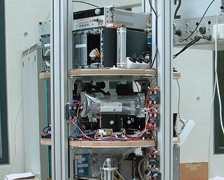
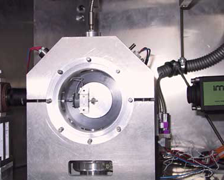
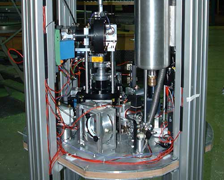
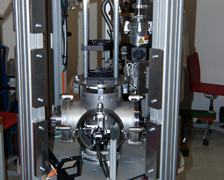
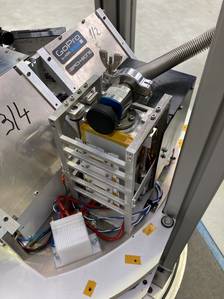
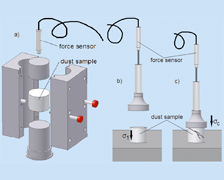
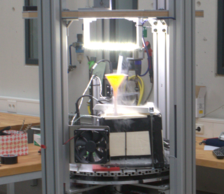
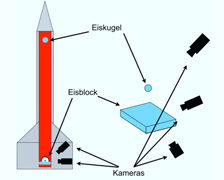
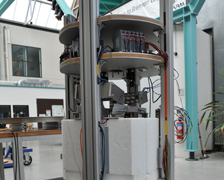
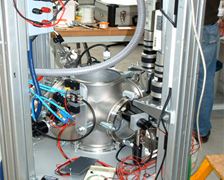
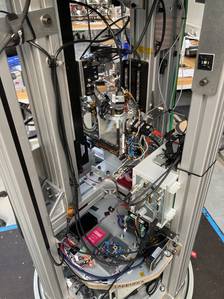
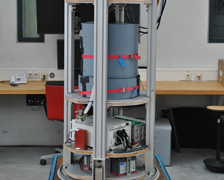
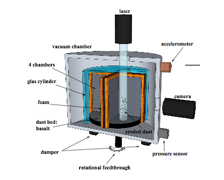
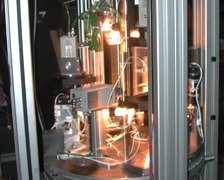
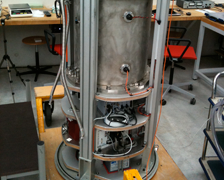
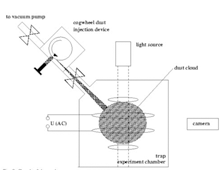
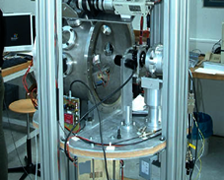
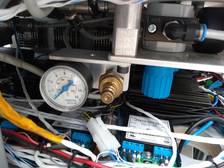
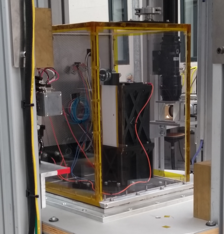
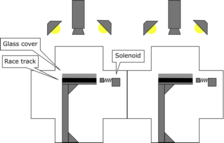
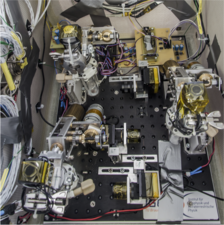
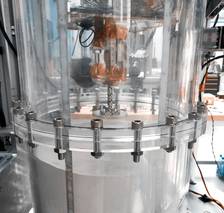
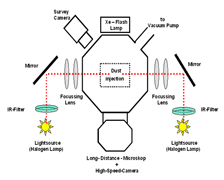
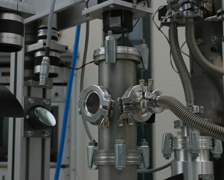
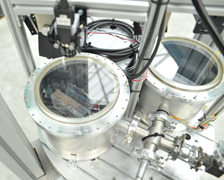
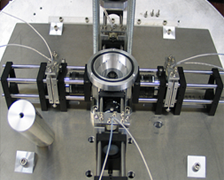
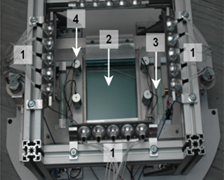
 "
"